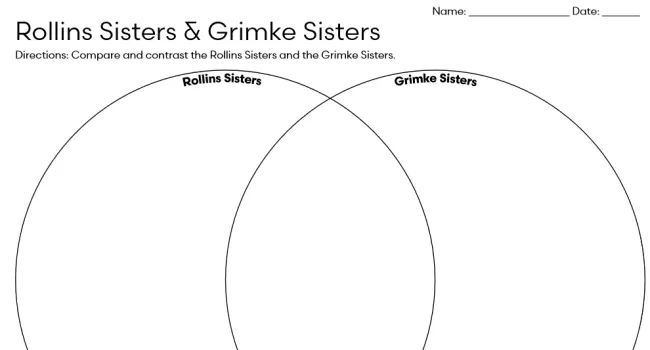During this period, there were many people, including African Americans, who felt the issue of women’s suffrage was much less important than civil rights for Blacks.
In the spring of 1869, on behalf of the Judiciary Committee, Charlotte Rollin made a speech on the floor of the S.C. State Legislature. Her speech, in support of women’s suffrage, was the first time a women ever addressed the legislature. The committee made a motion to enfranchise women, but was denied. Charlotte later follows up with a rally on the SC State House grounds, and hosts a women’s rights convention. The Rollin family continued to grow in influence, wealth, and social status, and hosted many gatherings in their Columbia estate. Their home and salon became unofficially known as the Republican Headquarters. The Rollin Salon defied many social norms, as being a place where men and women, Black or White, could gather to discuss social and political issues.
Standards
- 8-5 The student will understand the impact of Reconstruction, industrialization, and Progressivism on society and politics in South Carolina in the late nineteenth and early twentieth centuries.
- USHC-4 The student will demonstrate an understanding of the industrial development and the consequences of that development on society and politics during the second half of the nineteenth and the early twentieth centuries.
- USHC.3.CE Assess the causes and effects of significant turning points in the Populist and Progressive era from 1877–1924.
- This indicator was developed to encourage inquiry into the causes of American expansion, such as a growing and diversifying population and the expansion of the plantation economy. This indicator promotes inquiry into the relationship between sectionalism and political compromise, culminating in the Civil War.
- 8.3.CC Analyze debates and efforts to recognize the natural rights of marginalized groups during the period of expansion and sectionalism.
- 4.5.E Analyze multiple perspectives of the economic, political, and social effects of Reconstruction on different populations in the South and in other regions of the U.S.
- This indicator was developed to encourage inquiry into founding principles as viewed through this period of federal government involvement, the development and realignment of a new labor system not based on a system of slavery, and the significant political realignment of the South.
- 4.4.CC Identify and evaluate the economic, political, and social changes experienced throughout the Civil War.
- 4.4.P Explain how emancipation was achieved as a result of civic participation.





